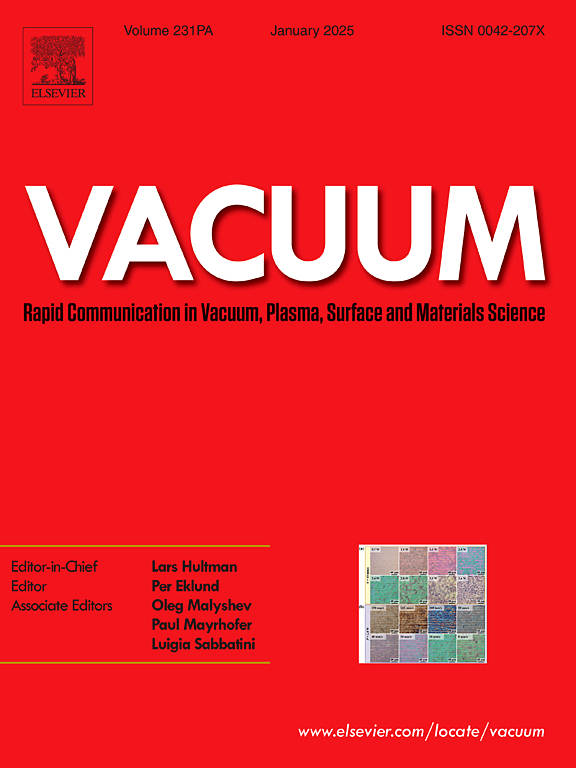用于操作电催化研究的实验室电化学 NAP-XPS 系统
IF 3.8
2区 材料科学
Q2 MATERIALS SCIENCE, MULTIDISCIPLINARY
引用次数: 0
摘要
在电催化反应过程中,电极、吸附剂、电解质离子以及电极-电解质界面上的溶剂分子都发挥着重要作用。电化学 X 射线光电子能谱(XPS)可提供界面上每种元素的氧化态或成键环境,为破译这些作用带来了巨大希望。然而,将 XPS 所需的真空与电化学所需的潮湿环境相结合是一项技术挑战,需要专门设计仪器和光谱电化学池。在此,我们介绍一种基于实验室的电化学 XPS 仪器,该仪器针对纳米结构电催化剂的操作研究进行了优化。该系统的核心是一个 3D 打印的光谱电化学池,其中包含一个膜-电极-石墨烯组件。我们的研究表明,这种设计使我们能够在明确的电位控制下探测电极表面、界面水和界面离子。同时,在组件中引入介孔膜可使任何分子或离子反应物向工作电极传输,从而为利用实验室电化学 XPS 研究任何水相电催化系统开辟了道路。我们以氧还原反应为例进行说明。本文章由计算机程序翻译,如有差异,请以英文原文为准。
A laboratory-based electrochemical NAP-XPS system for operando electrocatalysis studies
During electrocatalytic reactions, the electrode, adsorbates, electrolyte ions, and solvent molecules at the electrode-electrolyte interface each play an important role. Electrochemical X-ray photoelectron spectroscopy (XPS) holds great promise for deciphering these roles, providing the oxidation state or bonding environment of every element present at the interface. However, combining the vacuum required for XPS with the wet environment needed for electrochemistry constitutes a technical challenge, requiring purpose-built instrumentation and spectro-electrochemical cell design. Here, we present a laboratory-based electrochemical XPS instrument optimized for operando studies on nano-structured electrocatalysts. The core of the system is a 3D printed spectro-electrochemical cell containing a membrane-electrode-graphene assembly. We show that this design enables us to probe the electrode surface, interfacial water, and interfacial ions under well-defined potential control. Meanwhile, the introduction of a mesoporous membrane into the assembly enables the transport of any molecular or ionic reactant towards the working electrode, opening the way to study any aqueous phase electrocatalytic system using laboratory-based electrochemical XPS. We exemplify this for the oxygen reduction reaction.
求助全文
通过发布文献求助,成功后即可免费获取论文全文。
去求助
来源期刊

Vacuum
工程技术-材料科学:综合
CiteScore
6.80
自引率
17.50%
发文量
0
审稿时长
34 days
期刊介绍:
Vacuum is an international rapid publications journal with a focus on short communication. All papers are peer-reviewed, with the review process for short communication geared towards very fast turnaround times. The journal also published full research papers, thematic issues and selected papers from leading conferences.
A report in Vacuum should represent a major advance in an area that involves a controlled environment at pressures of one atmosphere or below.
The scope of the journal includes:
1. Vacuum; original developments in vacuum pumping and instrumentation, vacuum measurement, vacuum gas dynamics, gas-surface interactions, surface treatment for UHV applications and low outgassing, vacuum melting, sintering, and vacuum metrology. Technology and solutions for large-scale facilities (e.g., particle accelerators and fusion devices). New instrumentation ( e.g., detectors and electron microscopes).
2. Plasma science; advances in PVD, CVD, plasma-assisted CVD, ion sources, deposition processes and analysis.
3. Surface science; surface engineering, surface chemistry, surface analysis, crystal growth, ion-surface interactions and etching, nanometer-scale processing, surface modification.
4. Materials science; novel functional or structural materials. Metals, ceramics, and polymers. Experiments, simulations, and modelling for understanding structure-property relationships. Thin films and coatings. Nanostructures and ion implantation.
 求助内容:
求助内容: 应助结果提醒方式:
应助结果提醒方式:


